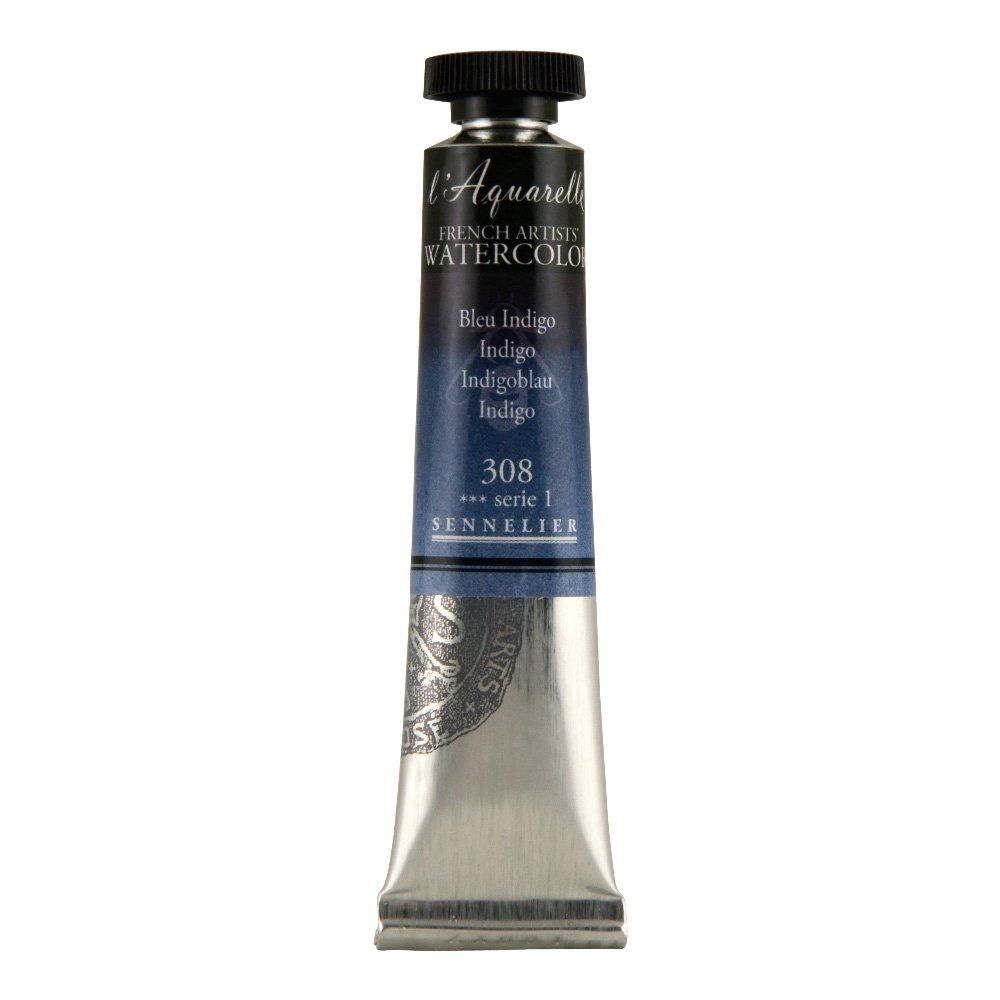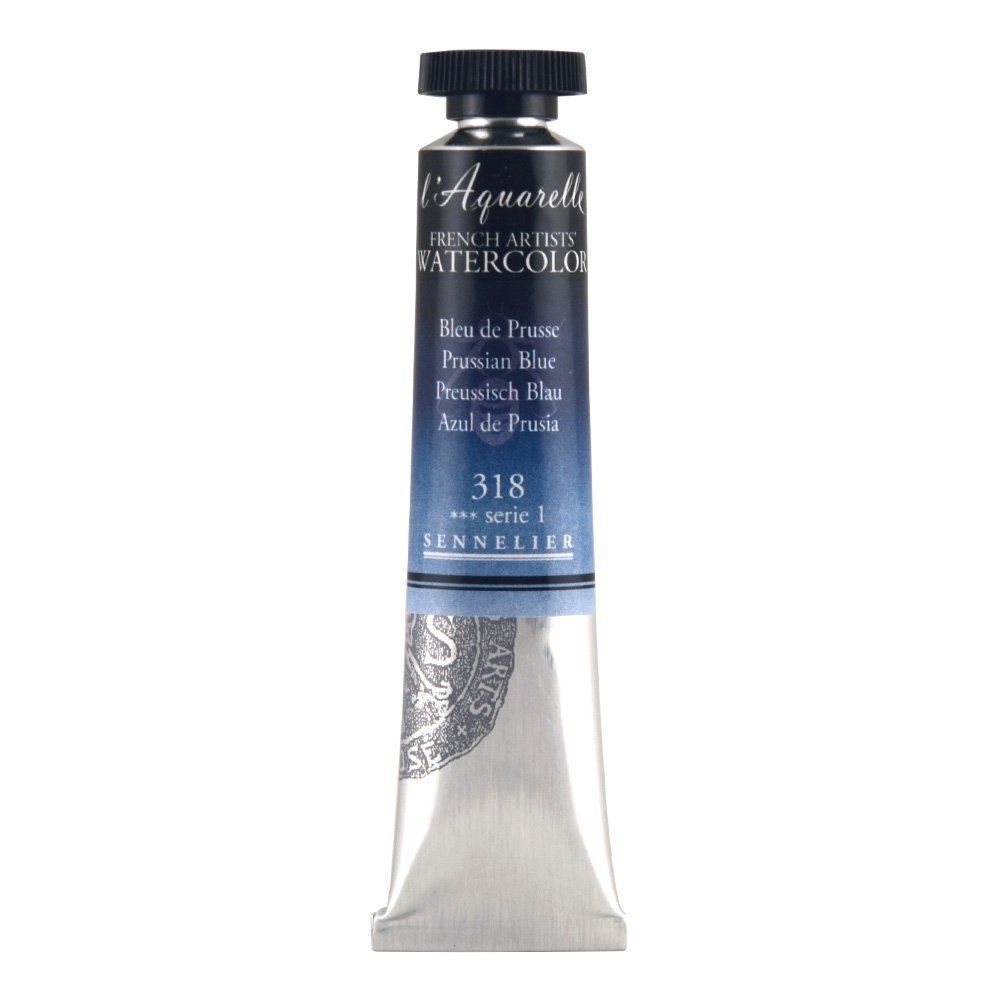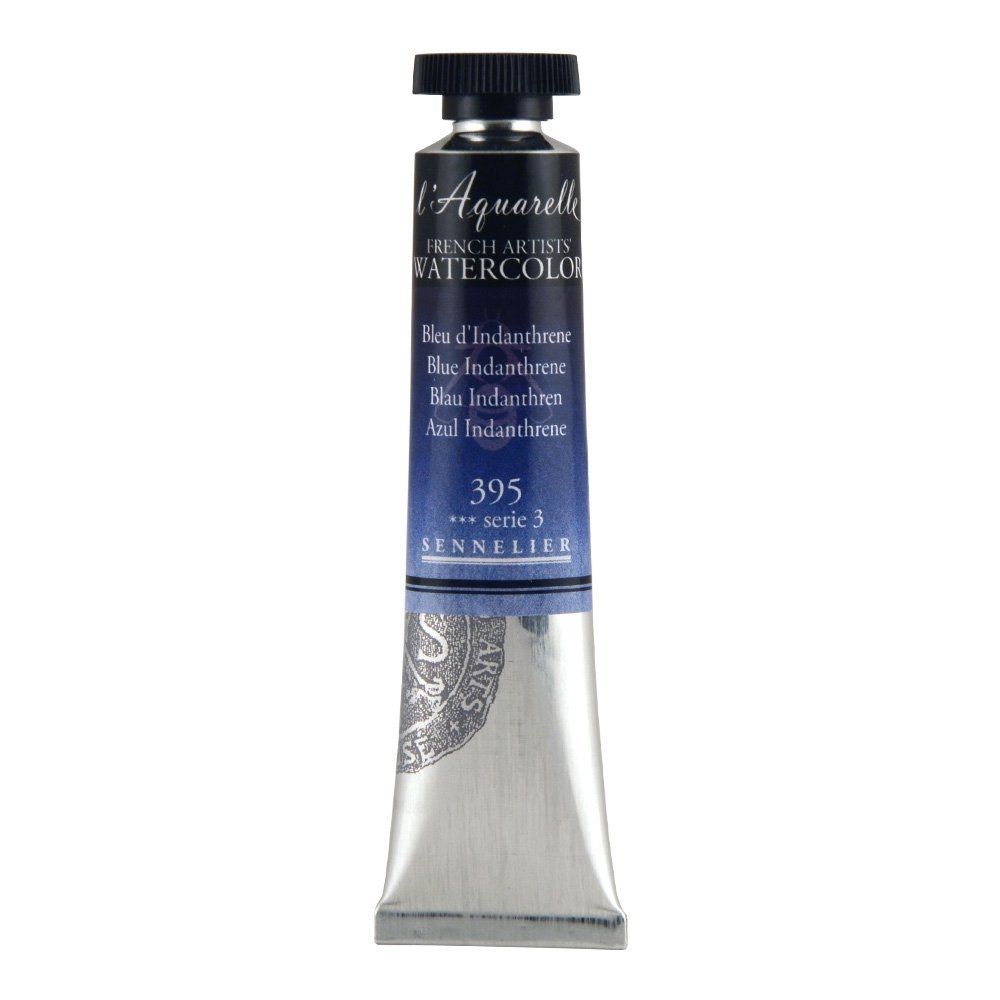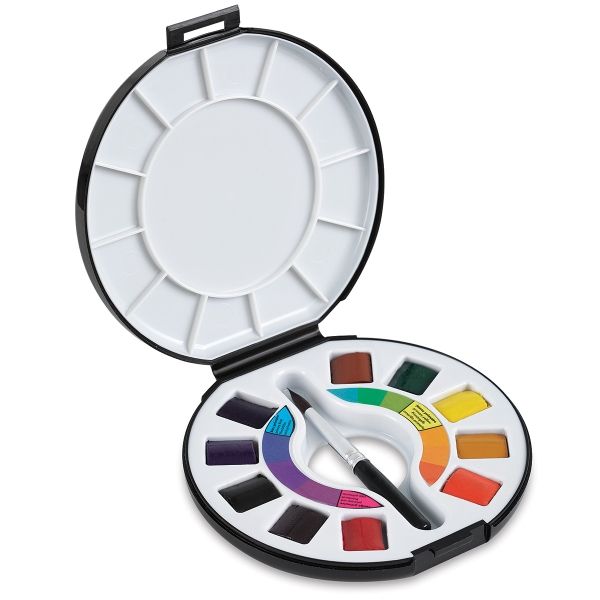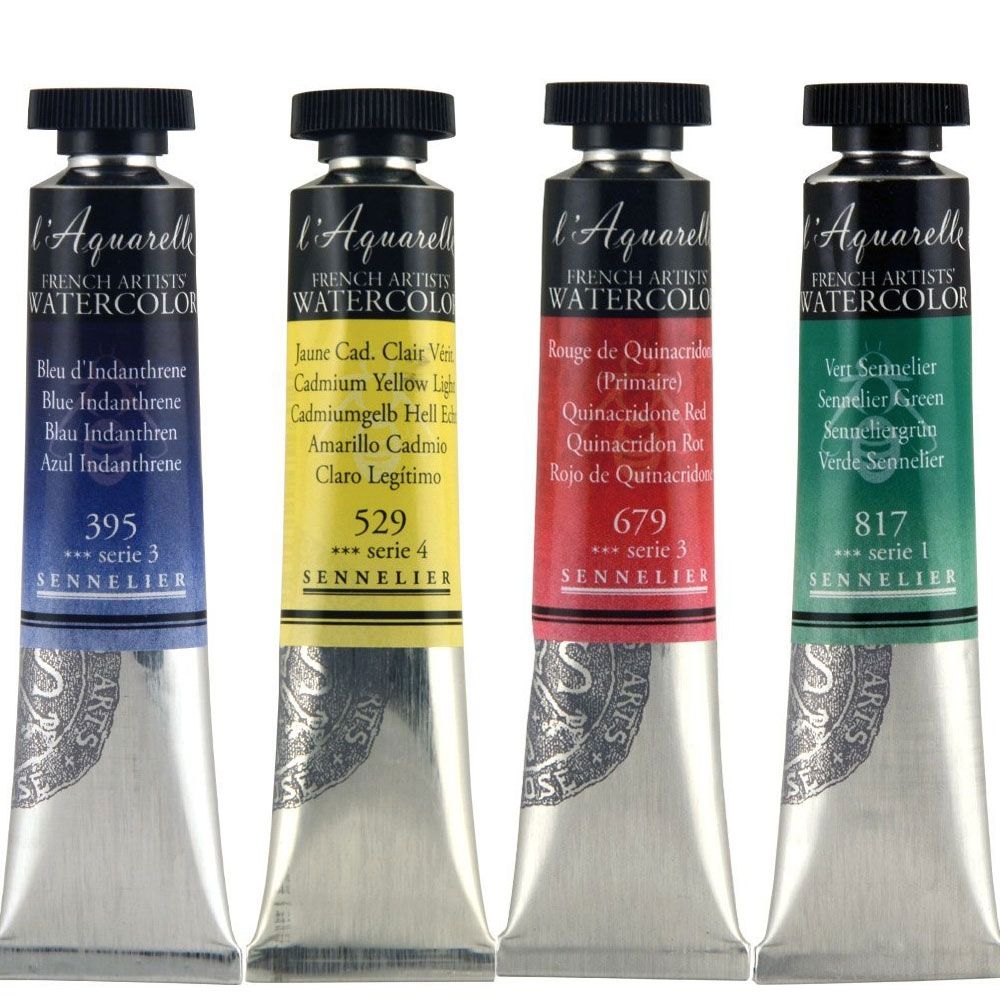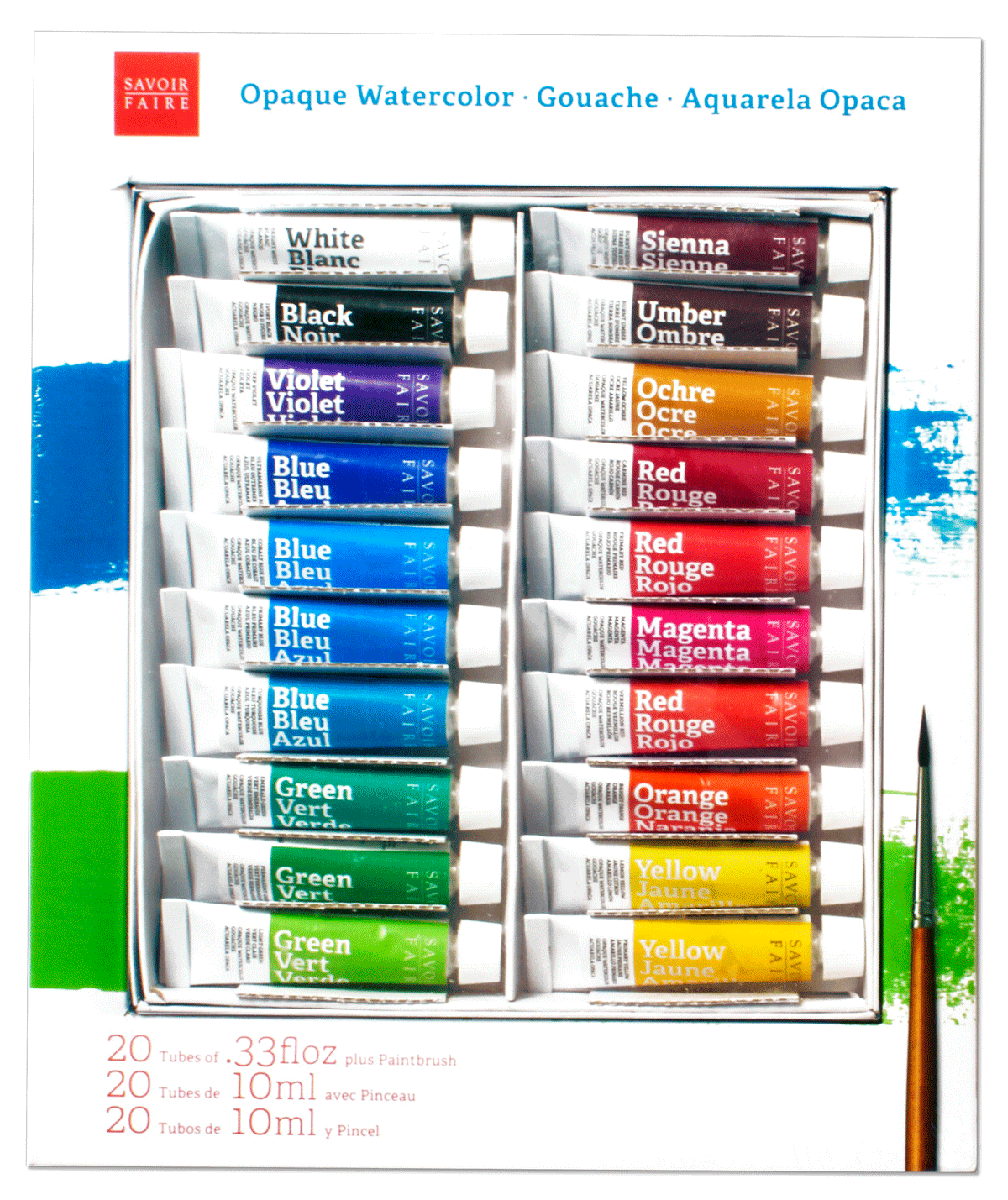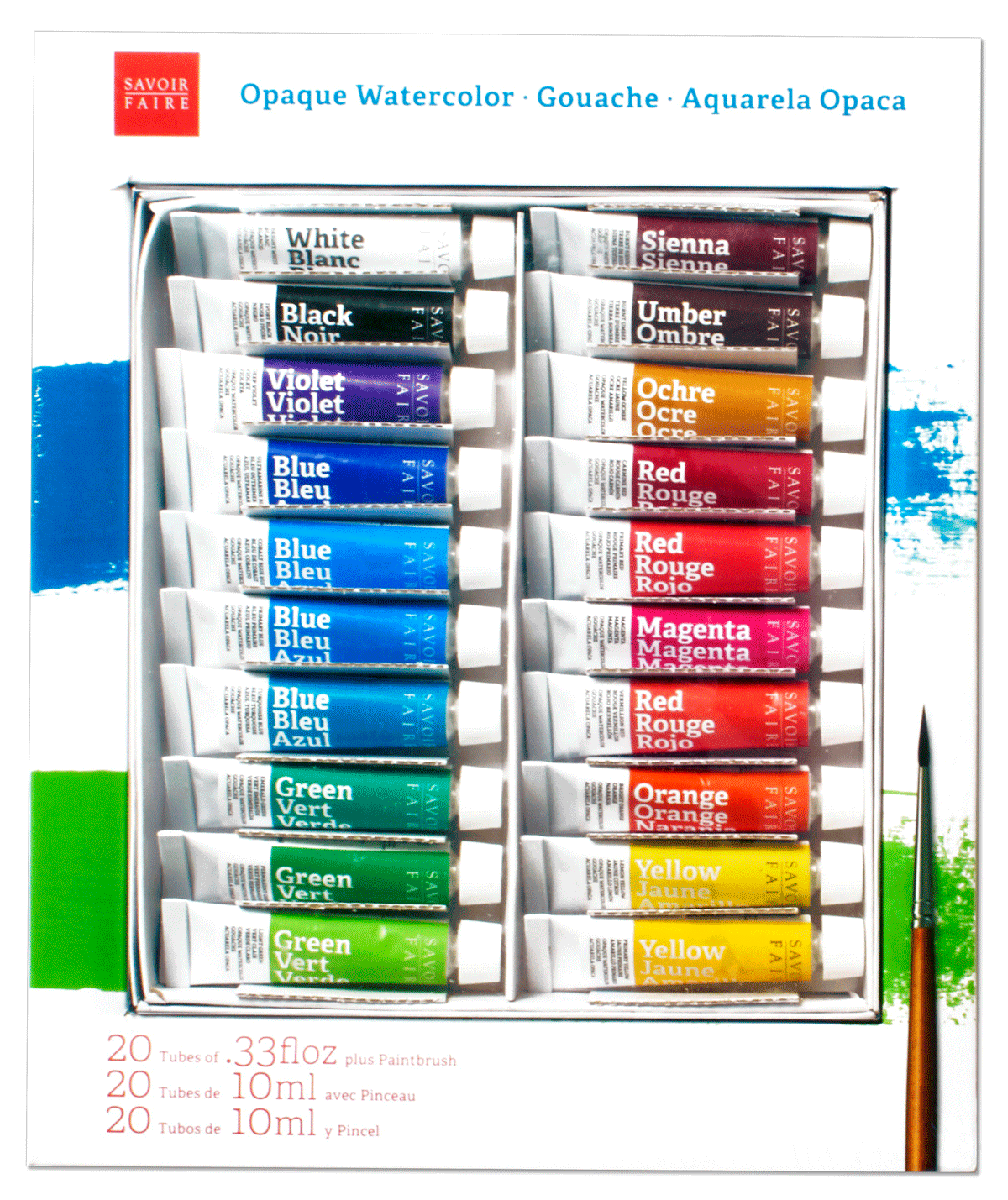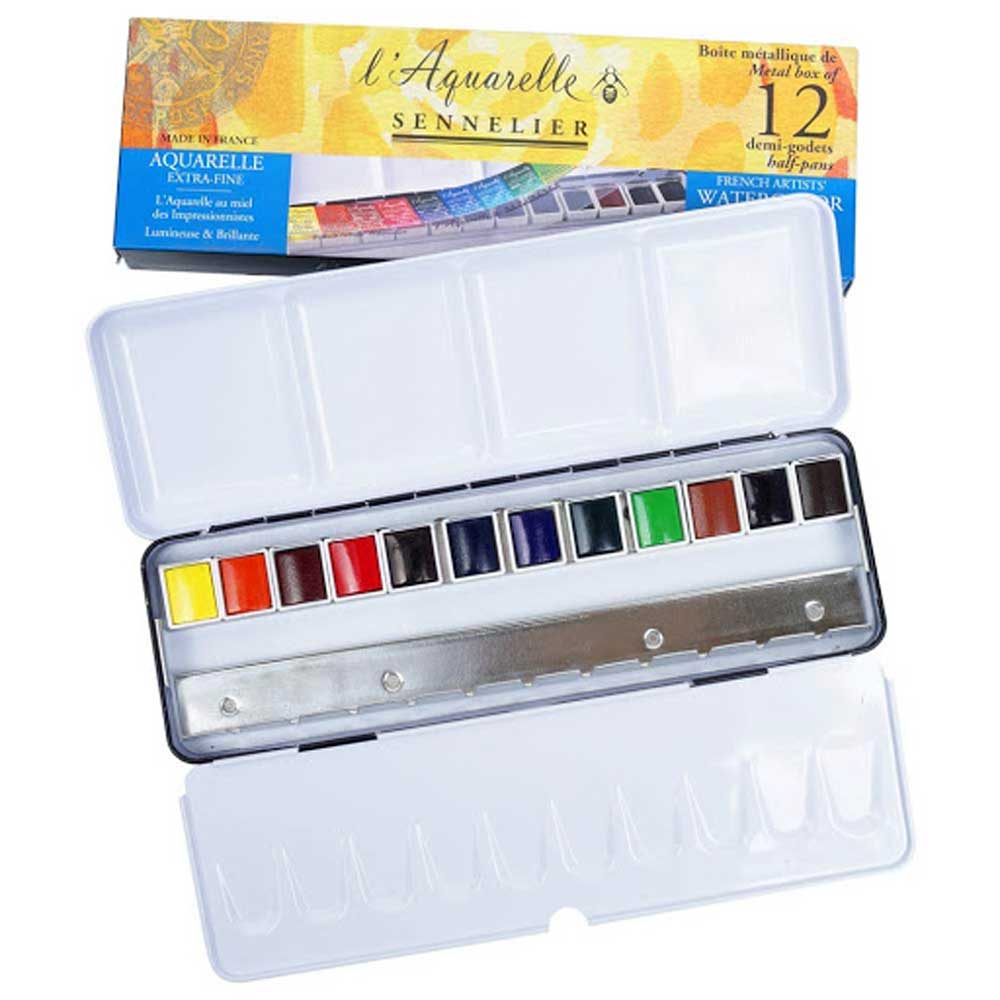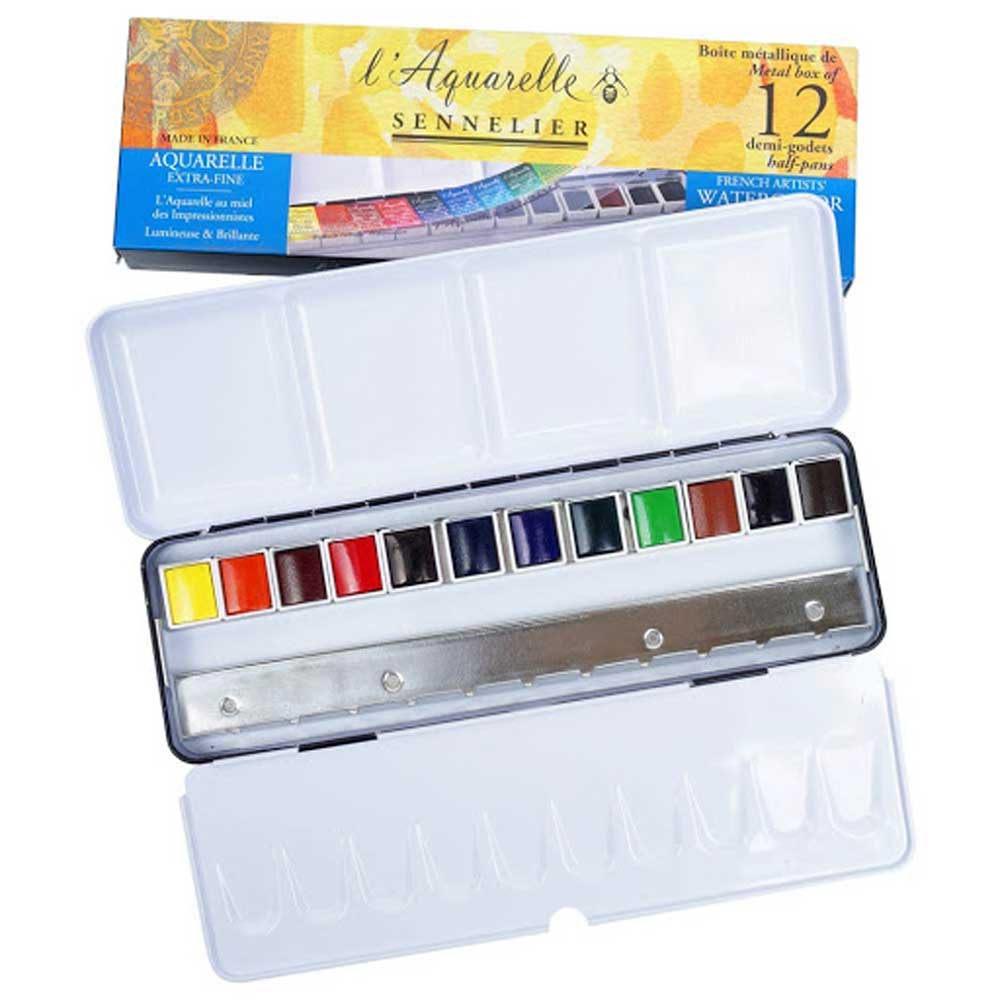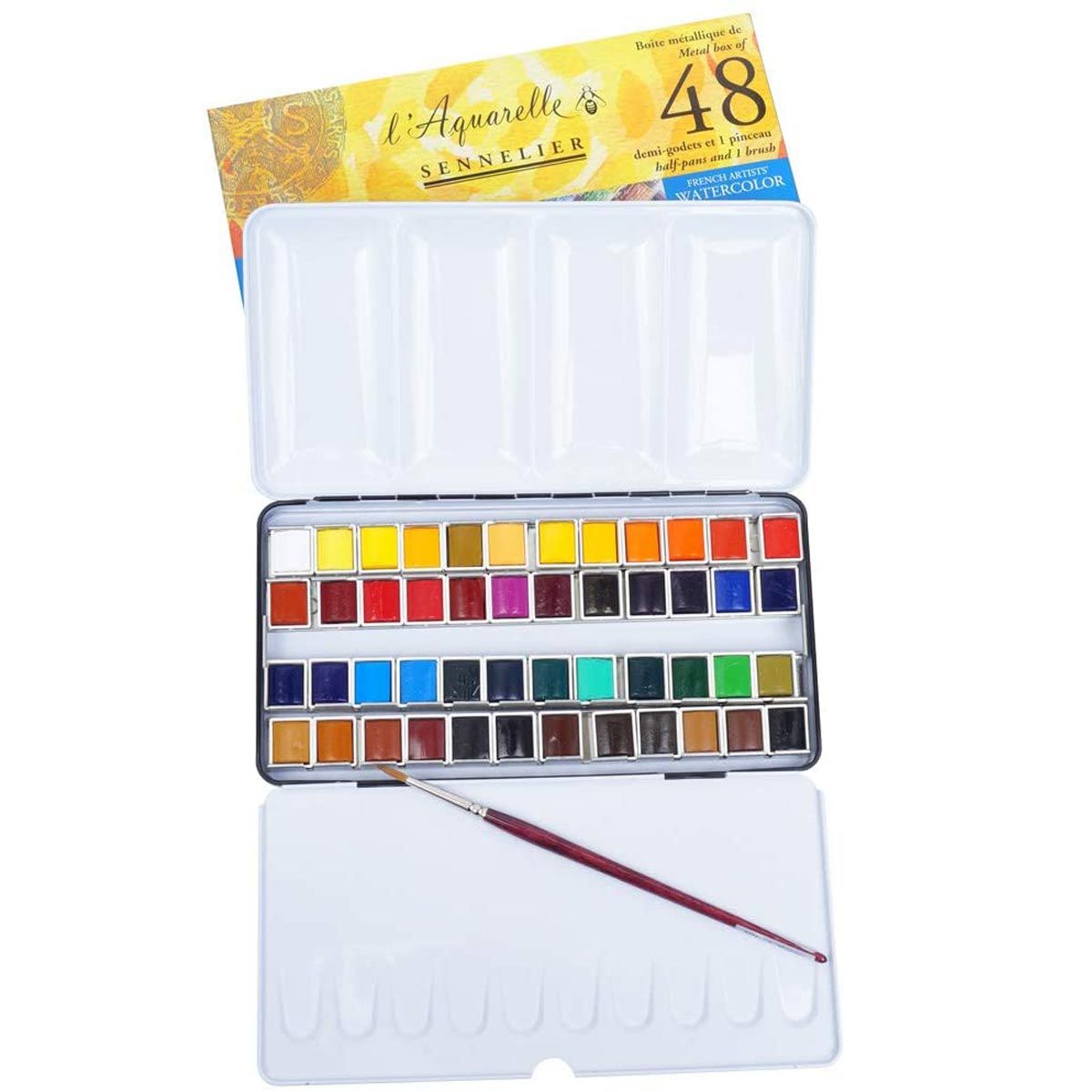Sennelier Watercolour S1 Indigo (308) 21 ml
Indigo (308) Indanthrene Blue is a clear, clean, deep blue organic pigment. It has moderate to high tinting strength. Lamp black is an opaque, heavily staining black pigment with little covering or tinting power. It is typically the opaquest black in watercolour form. Though a very pure black, it tends to muddy slightly in mixtures. Phthalo Blue PB15:1 is a structural variant of Phthalo Blue PB15 that produces more reddish tones.
- Pigment Name: PB60—Indanthrene Blue: PBk7—Lamp Black: PB15:1—Phthalo Blue
- Pigment Type: PB60- PBk7-Organic, vat dyes; Inorganic; PB15:1-Organic
- Series: 1
- Opacity: Semi-Opaque
- Permanence/Lightfast: (2) ***
Sennelier Watercolour S1 Indigo (308)
Indigo (308) Indanthrene Blue is a clear, clean, deep blue organic pigment. It has moderate to high tinting strength and is not as overpowering as Phthalo Blue. Hansa Yellow Deep, Benzimidazolone Orange, and Raw Umber are its best mixing complements. Lamp black is a very opaque, heavily staining black pigment with little covering or tinting power. It is typically the opaquest black in watercolour form. Though a very pure black, it tends to muddy slightly in mixtures. Phthalo Blue PB15:1 is a structural variant of Phthalo Blue PB15 that produces more reddish tones.
PB60—Indanthrene Blue. Indanthrene Blue is a clear, clean, deep blue organic pigment. It has moderate to high tinting strength and is not as overpowering as Phthalo Blue. Hansa Yellow Deep, Benzimidazolone Orange, and Raw Umber are its best mixing complements. Chemical Name: complex, insoluble anthraquinone
Permanence: Indanthrene Blue is permanent with excellent lightfastness in both masstone and tints.
Toxicity: Indanthrene Blue varies in its acute toxicity, though toxicity is generally slight.
History: Indanthrene Blue is the oldest vat dye, discovered and patented in 1901 by Rene Bohn. It is considered the first anthraquinone vat dye, a group of dyes characterized by excellent lightfastness. The pigment originates from this dye.
Alternate Names: Indanthrone.
PBk7—Lamp Black. Lamp black is a very opaque, heavily staining black pigment with little covering or tinting power. It is typically the opaquest black in watercolour form. Though a very pure black, it tends to muddy slightly in mixtures. Natural sources may be brownish or bluish in tone because of impurities. When used in oil paints, it is one of the slowest drying pigments, and should not be used in underpainting or applied in layers underneath other colours. Chemical Name: Carbon
Permanence: Lamp Black is very lightfast and absolutely permanent. It is used in all techniques in permanent painting.
Toxicity: Carbon itself has not been considered hazardous; however, other dangerous combustion products are often present as impurities when Lamp Black is produced from natural materials. For this reason, commercial preparations of the pigment should be considered slightly toxic. Avoid skin contact and inhalation. Where such impurities are present, Lamp Black is a possible human carcinogen.
History: Lamp Black is a carbon-based black traditionally produced by collecting soot (known as lampblack) from oil lamps. It has been used as a pigment since prehistoric times. It is the black found in Egyptian murals and tomb decorations and was the most popular black for fresco painting until the development of Mars Black.
Alternate Names: Carbon Black, Channel Black, Furnace Black, Oil Black, Vegetable Black. Flame Black is an impure version of Lamp Black. An alternate spelling is Lampblack, in which the first syllable is stressed, and the two words are elided to form a closed compound.
PB15:1—Phthalo Blue. Phthalo Blue PB15:1 is a structural variant of Phthalo Blue PB15 that produces more reddish tones.
Permanence: Phthalo Blues are completely lightfast and stable and are permanent for all paint uses. Due to their stability, they are currently used in inks, coatings, and many plastics and are considered a standard pigment in printing ink and the packaging industry. Chemical Name: alpha copper phthalocyanine.
Toxicity: Phthalo Blues have no significant hazards, although those made before 1982 contained some PCBs (polychlorinated biphenyls).
History: Developed by chemists using the trade name Monastral Blue, the organic blue dyestuff, now known as Phthalo Blue, was presented as a pigment in November 1935 in London. Its discovery was accidental. The dark colour was observed in a kettle where a dye was made from a British dyestuff plant. The demand for such a pigment came from commercial printers who wanted cyan to replace Prussian Blue.
Alternate Names: Phthalo Blue Red Shade, Winsor Blue Red Shade
| Size | 21 ml |
|---|---|
| Brand | Sennelier |
| Country of Manufacture | France |
| Type of Store Credit value | Select |










